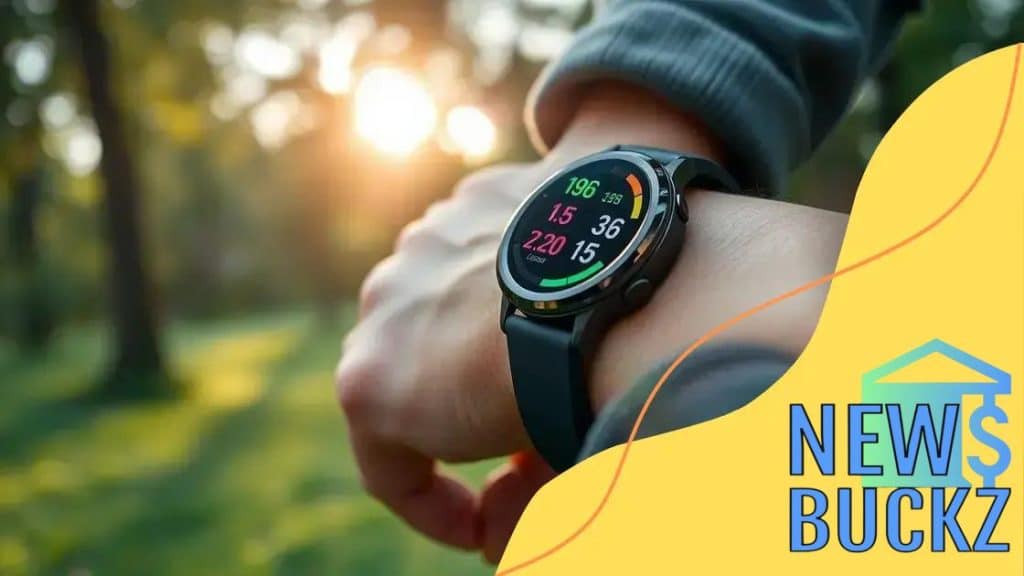The rise of global health monitoring using wearable devices

Anúncios
The rise of global health monitoring using wearable devices is revolutionizing personal health management by providing real-time data, encouraging proactive health decisions, and integrating advanced technology for improved outcomes.
The rise of global health monitoring using wearable devices is changing the way we approach health and wellness. Imagine having real-time access to your health data at your fingertips. Sounds interesting, right? Let’s dive in!
Anúncios
Understanding wearable devices in health
Wearable devices are revolutionizing how we monitor our health. By offering real-time data, they empower individuals to take control of their well-being.
These sleek gadgets come in various forms, including fitness trackers, smartwatches, and even smart clothing. With the rise of global health monitoring, understanding how to use these devices effectively is crucial.
What are wearable devices?
Wearable devices are electronic gadgets that can be worn on the body, designed to collect data about the wearer’s health and activities. They often sync with smartphones or computers for better data analysis.
Anúncios
How do they work?
These devices typically feature sensors that track various health metrics. For example:
- Heart rate monitoring to check cardiovascular health.
- Step counting to measure physical activity levels.
- Sleep tracking to analyze rest patterns.
- Calorie tracking for dietary management.
Information gathered from these wearable devices helps users identify trends in their health and activity levels. By evaluating this data over time, individuals can make informed decisions about their health and lifestyle changes.
Moreover, many devices come equipped with alerts that notify users of anomalies or health issues, making them valuable tools for early detection of potential problems.
Popular examples of wearable health devices
Some of the most recognized brands in the market include:
- Fitbit – known for its fitness trackers.
- Apple Watch – integrates health and smartphone functions.
- Garmin – offers devices focused on specific sports.
- Oura Ring – helps track sleep and recovery.
Each of these brands provides unique features that cater to different health needs and lifestyles. As the technology advances, we can expect even more innovative features that enhance the way we monitor and manage our health.
Wearable devices are not just about trends; they represent a shift in how we engage with our health. With continual improvements in technology, users are more informed and can act swiftly regarding their health concerns.
The technology behind health monitoring wearables
The technology behind health monitoring wearables is fascinating and complex. These devices use advanced sensors and software to track various health metrics, revolutionizing how we understand our bodies.
At the heart of wearable technology are sensors that gather data about the wearer. Common sensors include:
- Accelerometers – track movement and activity levels.
- Heart rate monitors – provide real-time heart rate data.
- GPS – helps in mapping outdoor activities like running or cycling.
- Temperature sensors – monitor body temperature for signs of illness.
This data is then processed through sophisticated algorithms that analyze trends, offering insights into the user’s health over time. This analysis enables users to make informed decisions about their lifestyle.
How data is collected
Wearable devices collect data continuously. Many of them sync with smartphones to display information clearly. This interaction between devices is crucial for maintaining user engagement and delivering valuable feedback.
Integration with applications
Many health monitoring wearables link to applications that enhance their functionality. These apps help users set fitness goals, track nutrition, and maintain overall wellness. Popular features include:
- Personalized health insights based on user data.
- Workout recommendations tailored to fitness levels.
- Reminders for hydration, movement, or medications.
As technology continues to evolve, wearables are becoming more sophisticated, integrating advanced machine learning to provide deeper insights into health patterns.
This capability allows users not only to track metrics but also to understand how different activities impact their health, making the devices powerful tools for personal wellness.
Key benefits of using wearable health devices

Using wearable health devices offers numerous benefits that can significantly enhance one’s health journey. These devices are designed to provide valuable insights into daily health metrics and facilitate a healthier lifestyle.
One major advantage of wearable devices is their ability to track physical activity accurately. Many users find it easier to meet fitness goals when they see their progress in real-time. For example, when users receive updates on the number of steps taken or calories burned, they are motivated to keep moving.
Health monitoring
Wearable health devices continuously monitor vital signs, providing essential information about the wearer’s health. This can include:
- Heart rate tracking, which helps in understanding cardiovascular health.
- Sleep analysis, allowing better management of sleep patterns.
- Continuous glucose monitoring for diabetic users.
- Stress level assessments through heart rate variability.
This real-time feedback enables users to adjust their activities and routines accordingly. Knowing their health status can motivate users to make positive changes.
Goal setting and achievements
Another great benefit is the ability to set personal goals. Users can set tasks like increasing daily steps or improving sleep quality. These targets create a sense of achievement when met. Achieving goals enhances motivation and encourages users to engage more with their health.
Moreover, many wearables connect to social networks, allowing users to share their progress with friends. This social aspect fosters accountability and can motivate individuals even further.
As technology advances, the integration of health monitoring wearables with other health platforms continues to grow. Users benefit from a holistic view of their health, which can lead to proactive health management. By using these devices, individuals are more empowered to understand their health and well-being.
Challenges in global health monitoring
Global health monitoring faces several challenges that can hinder effective implementation and use of wearable health devices. These challenges can affect the accuracy of data and the overall success of health monitoring initiatives.
One major issue is the accuracy of data collected by wearable devices. Sensors can sometimes produce incorrect readings due to user error or environmental factors. For example, a heart rate monitor may misread data if the device is loose or improperly positioned. Ensuring reliable data is crucial for informed health decisions.
Data privacy concerns
Another significant challenge involves data privacy. Many users hesitate to share personal health information due to fears of data breaches or misuse. This hesitation can prevent users from fully engaging with wearable health devices, limiting the benefits these technologies offer.
Access and affordability
Access to technology is also a challenge, especially in low-income areas. Not everyone can afford wearable devices, which can exacerbate health disparities. Additionally, limited internet access can hinder the ability to sync and analyze data retrieved from these devices.
Wearable devices rely on software applications that analyze the data collected. If the software lacks user-friendliness, many individuals may struggle to interpret their health information correctly. A complicated interface can discourage ongoing use of the device.
Finally, the integration of data from multiple devices can be problematic. Users often own various health tracking devices, making it challenging to consolidate and analyze data. This fragmentation can lead to an incomplete picture of an individual’s overall health.
Addressing these challenges is essential to advancing global health monitoring. With proper strategies in place, the potential of wearable health devices can be fully realized, ultimately improving health outcomes for individuals and communities.
Future trends in health technology and wearables
The future of health technology and wearable devices looks promising, with exciting trends shaping how we monitor and manage our health. As technology advances, newer features and capabilities are emerging, providing even more value to users.
One key trend is the integration of artificial intelligence (AI) into wearable health devices. AI can analyze vast amounts of data collected from users and provide personalized health insights. For instance, devices may soon alert users to potential health issues before they become serious. This proactive approach can significantly improve health outcomes.
Enhanced connectivity
Another important trend is enhanced connectivity with other smart devices. Wearables are becoming part of a larger ecosystem that includes smartphones, home assistants, and medical devices. This integration allows for seamless data exchange, making it easier for users to understand their health metrics. Individuals will be able to access real-time updates and advice right at their fingertips.
Focus on mental health
The focus on mental health is also gaining attention in wearable technology. Devices are now being designed to monitor not just physical metrics but also psychological well-being. Features such as stress level monitoring and mood tracking are becoming common, offering users tools to manage their mental health alongside physical fitness.
Additionally, wearables are expected to become more user-friendly and aesthetically appealing. Manufacturers are beginning to prioritize design, ensuring that devices do not just serve a functional purpose but are also stylish. Customization options will allow users to express their individual style through their technology.
In terms of data security, future wearables are likely to incorporate advanced encryption and privacy measures. Users are becoming increasingly concerned about their data, and protecting this information will be a top priority for developers.
As these trends develop, we can expect a future where wearable devices play a central role in preventive health care, enhancing lives through advanced technology.
FAQ – Frequently Asked Questions about Wearable Health Devices
What types of data can wearable health devices track?
Wearable health devices can track various metrics such as heart rate, steps taken, sleep quality, and sometimes even stress levels.
How can wearable devices improve my health management?
They provide real-time feedback, encourage physical activity, and help set and achieve personal health goals.
Are there privacy concerns with wearable health devices?
Yes, there are concerns about data privacy, as personal health information can be sensitive and should be protected.
What is the future of wearable health technology?
The future includes advancements like AI integration, better connectivity, and a greater focus on mental health monitoring.





